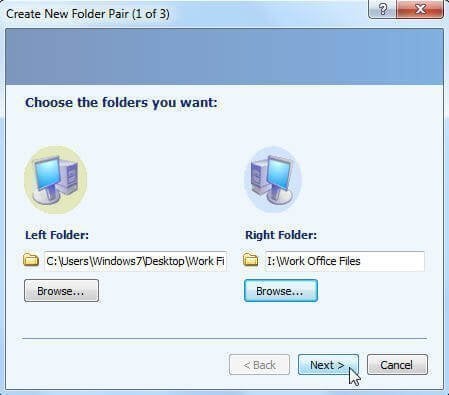

Work Folders is part of the People-Centric IT pillar in Windows Server 2012 R2. This allows a seamless experience for the user while keeping the organization in compliance and preventing leakage of sensitive information.įor more details about Work Folders deployment see the following blog: The file server then can automatically classify the document based on content, if configured using File Server Resource Manager, and encrypt the document using Windows Rights Management Services before syncing the document back to all the user’s devices. This can range from simply having a copy of the data if the user leaves the company to a wide range of capabilities such as backup, retention, classification and automated encryption.įor example, when a user authors a sensitive document in Work Folders on their work PC, it gets synced to the file server. IT administrators can use Work Folders to gain more control over corporate data and user devices and centralize user work data so that they can apply the appropriate processes and tools to keep their company in compliance. Work Folders as Experienced by an IT Admin
#SYNC FOLDERS ON WINDOWS PRO#
The biggest difference from SkyDrive or SkyDrive Pro is that the centralized storage for Work Folders is an on-premise file server running Windows Server 2012 R2, but we’ll get to that a little later in this post.

We kept the user interaction simple and familiar so that there is little user education required. Looks familiar? Indeed, this is how consumer storage services such as SkyDrive and business collaboration services such as SkyDrive Pro work. He can work on the document offline, and when he returns home the document is synced back with the file server and all of the changes are available to him the next day when he returns to the office. When Joe returns home, he can pick up his Surface RT (where the document is already synced) and head to the beach. To show how this works, here’s an example of how an information worker, Joe, might use Work Folders to separate his work data from his personal data while having the ability to work from any device: When Joe saves a document on his work computer in the Work Folders directory, the document is synced to an IT-controlled file server. Work Folders as Experienced by an Information Worker This is done by syncing user data from devices to on-premise file servers, which are now extended to include a new sync protocol. Work Folders enables IT administrators to provide Information Workers the ability to sync their work data on all their devices wherever they are while remaining in compliance with company policies. “I’d like to empower my Information Workers (users) while reducing information leakage and keeping control of the corporate data that is sprawled across devices” “I need to work from anywhere on my different devices” I’m very excited to introduce to you Windows Server Work Folders, which is a new file server based sync solution in Windows Server 2012 R2 and Windows 8.1.ĭuring Windows Server 2012 R2 planning, we noticed two converging trends around managing and protecting corporate data: Hello, my name is Nir Ben-Zvi and I work in the Windows Server team. Making Device Users Productive and Protecting Corporate Information
#SYNC FOLDERS ON WINDOWS SERIES#
” series that is featured on Brad Anderson’sĪnd how it applies to Brad’s larger topic of “People-centric IT.” To read that post and see the other technologies discussed, read today’s post: “ What’s New in Windows Server & System Center 2012 R2 First published on TECHNET on Jul 09, 2013


 0 kommentar(er)
0 kommentar(er)
